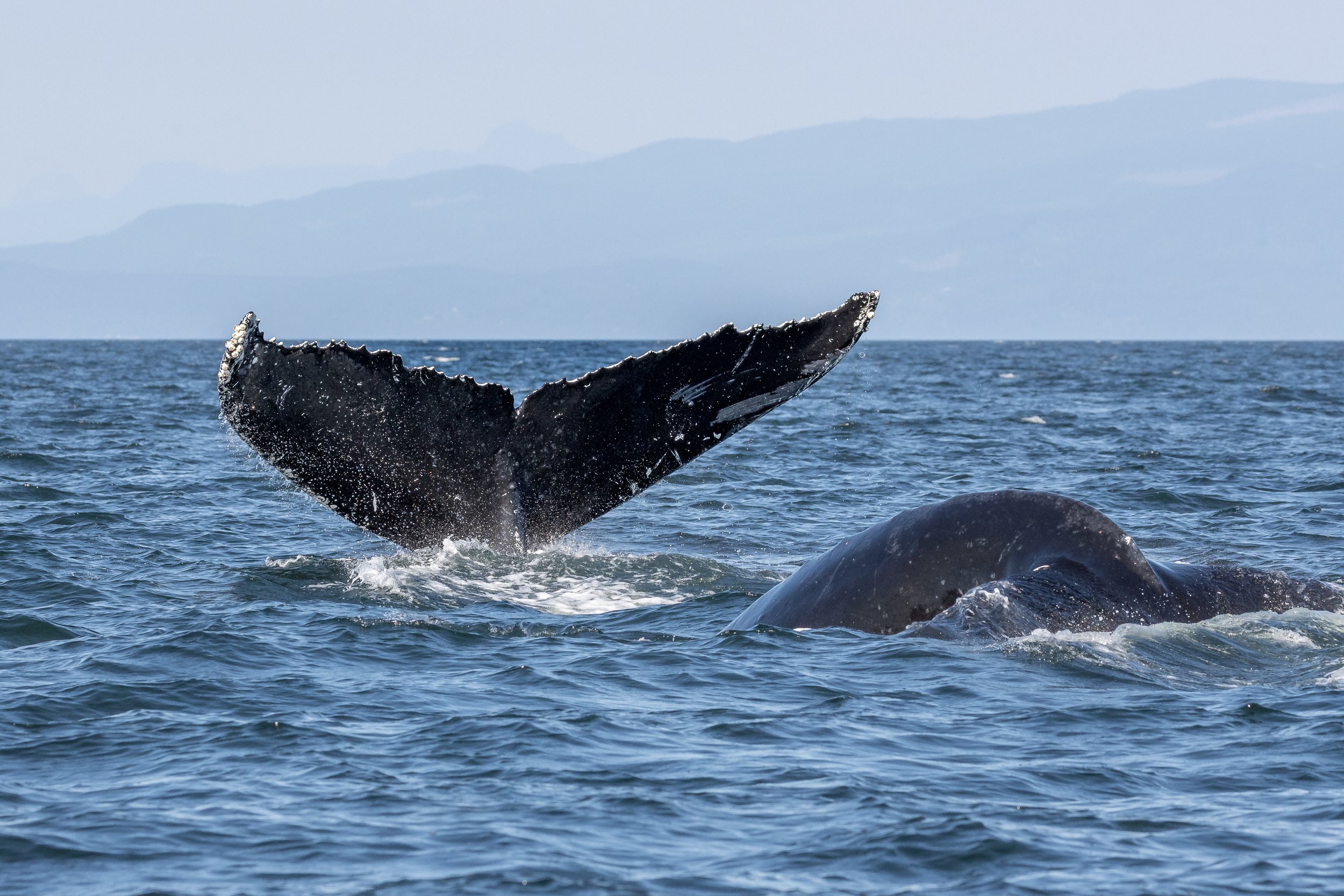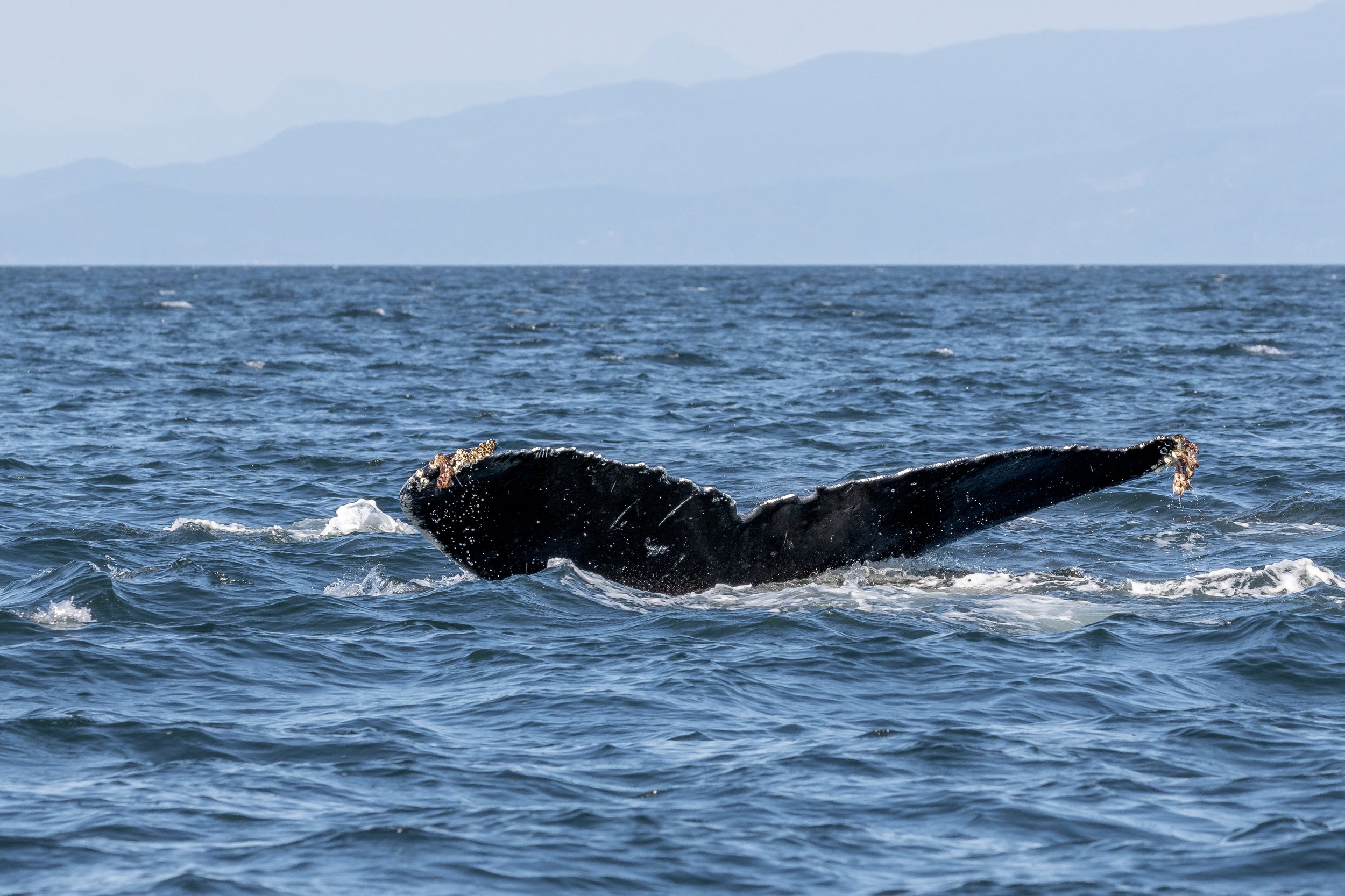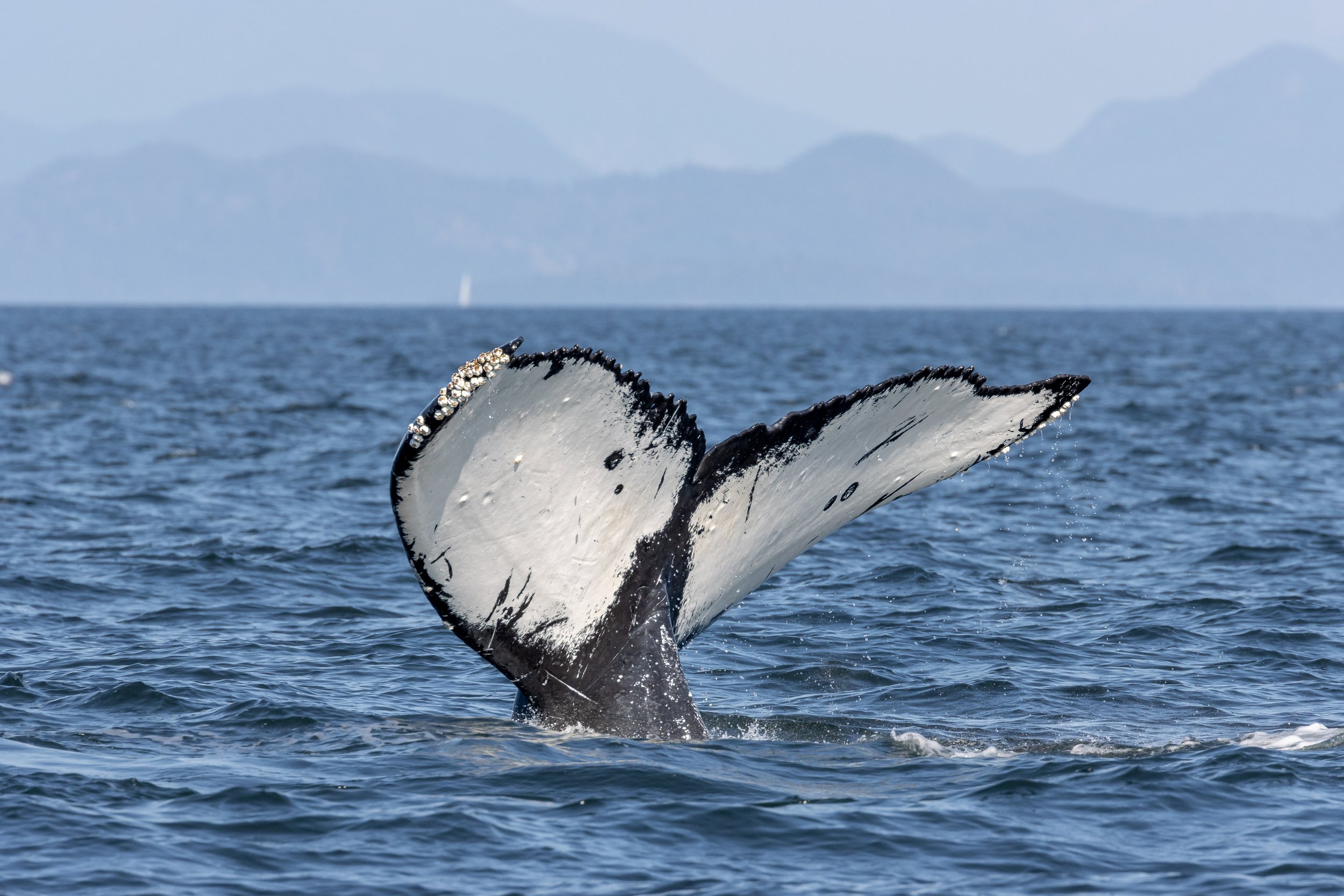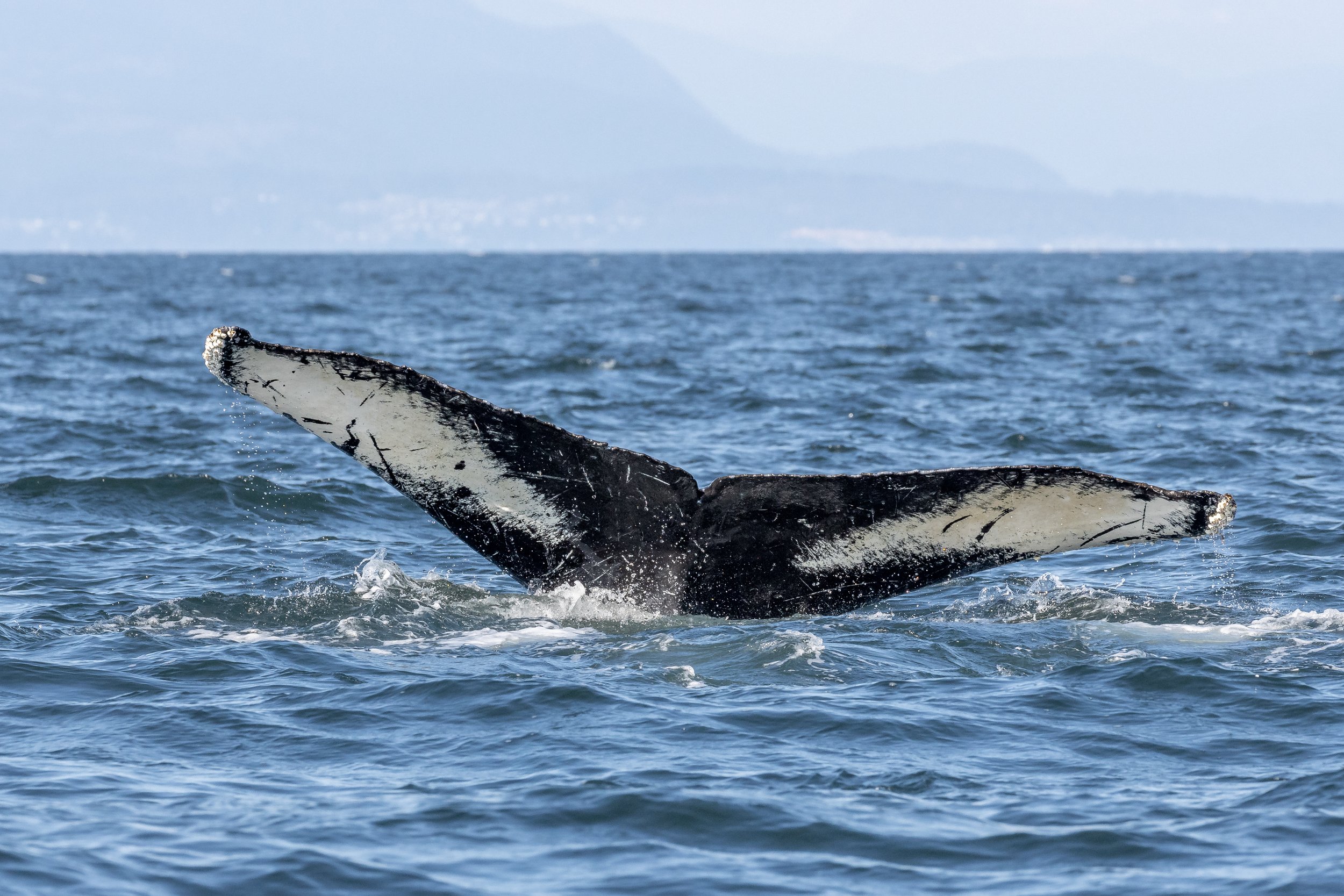September 30th - Humpback Soup continues near Nanaimo!
It was another humpback-filled day! We left the harbour and headed out into the Strait of Georgia where there has been plenty of humpback sightings lately. The good thing about our humpbacks is that they can be a bit more predictable than our orca are. The humpback whales tend to spend time in areas of high productivity! In general, if you see a whole bunch of humpbacks spread out in a certain area, it means that there is lots of food there for them and you will likely see them there for a few days. Of course, there can be exceptions to this so it doesn’t always hold true. Nonetheless, we headed to the east side of Gabriola Island and sure enough, we saw the blows in the distance!
The first group of humpbacks that we came across on this trip were two whales travelling together: Tempest (BCX0837) and Prowler (KEX0047). These two appeared to be feeding since we saw them come up for a few breaths before lifting their tails into the air, propelling them down into the water for a deeper dive. While watching these whales we had something special happen, the light caught the blows of the whales just right that it produced a rainbow! This happens because the water droplets that get blown into the air by the humpbacks when they breathe act as a prism, breaking the natural white light from the sun into rainbow colours. The different wavelengths of colour travel at different speeds which is why you always get rainbows showing the same colours in the same order. It’s pretty amazing and always a beautiful sight!
After watching these two we saw more blows close by so we switched groups and started to watch three different whales together; Split Fluke (BCX1068), Two Spot (KEY0010), and Kraken (BCZ0180). These three were travelling very close to each other, sometimes looking like they were dogpiling on each other! Humpbacks were thought to be solitary creatures but lately, it’s been rare to see a humpback travelling solo. We have to wonder if this idea that they are solitary was induced since their numbers were so low from when they were being hunted in the area. Their population has been steadily rising since whaling was banned here in Canada, with new individuals spending their summers here instead of at other feeding grounds, and from calves being born. Tempest and Split Fluke are both known mothers who have brought at least three calves each back to the Salish Sea.
As we were starting to head back in for the day, Tempest and Prowler made one last appearance with another friend having joined the group. We didn’t manage to get any photos from the friend that we could use for ID but it’s still great to have seen another humpback!
Our final stop was to see the California Sea Lions that have returned to our waters! These sea lions have just come back from their migration down south, where they go to breed. It’s great to have them back as they are quite funny to watch with the way they growl, bark, and play around with each other.
Our onboard marine naturalist Vanessa Vereschahen captured some amazing photos during this tour which you can see below!
Prowler.
Prowler.
Tempest.
Tempest giving a rainblow!
Prowler producing a rainblow.
Tempest (front) and Prowler (back).
Tempest and Prowler.
Tempest diving while Prowler prepares to dive as well.
Prowlers fluke. Did you know that dent on the right fluke used to be a hole? It’s warn away over time to have opened into that distinguishing feature.
Tempest.
Tempest.
Split Fluke.
Split Fluke.
Two Spot.
Two Spot.
Kraken.
Kraken.
Split Fluke.
Tempest.
Here’s the three dog-piling each other!
Harbour seals happily hauled out.
An adult bald eagle.
A harbour seal next to an attempted murder (to be a murder there must be more crows present).
Young harbour seal getting ready to jump in the water.
A California Sea Lion getting ready to bark at the boat.
No trip is complete without a gull sighting!



























